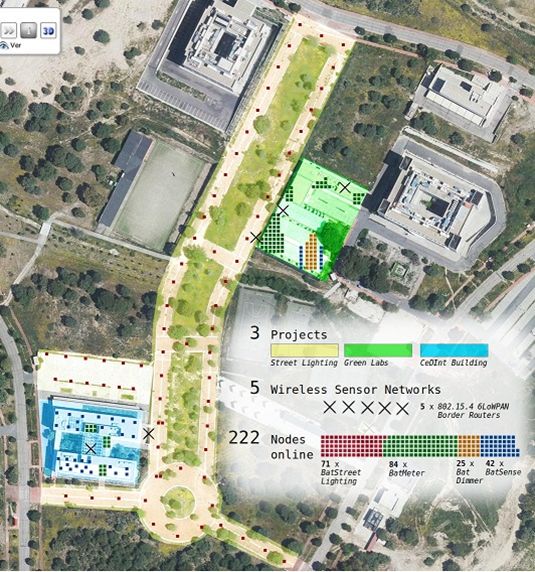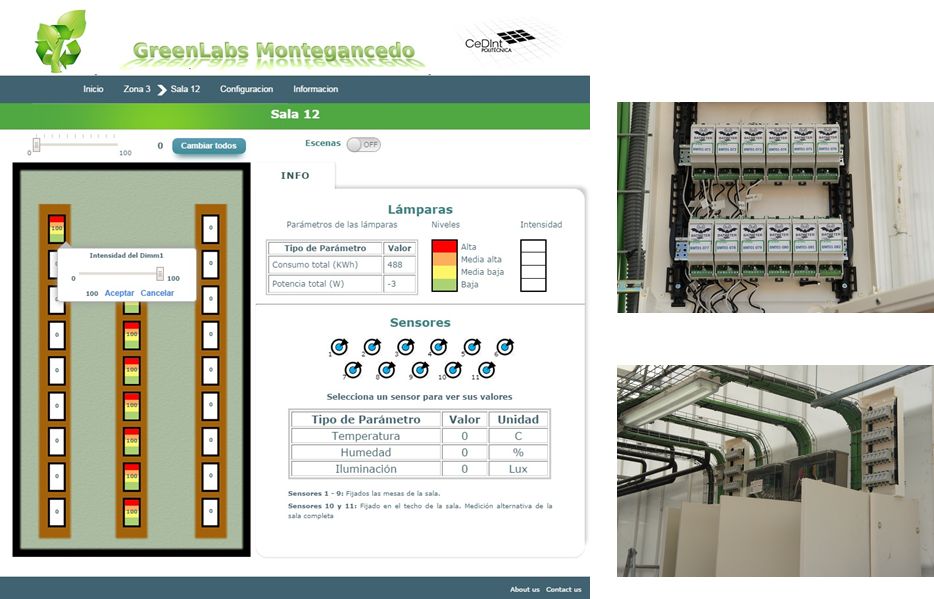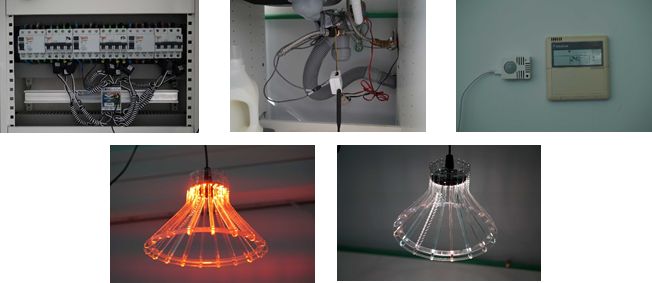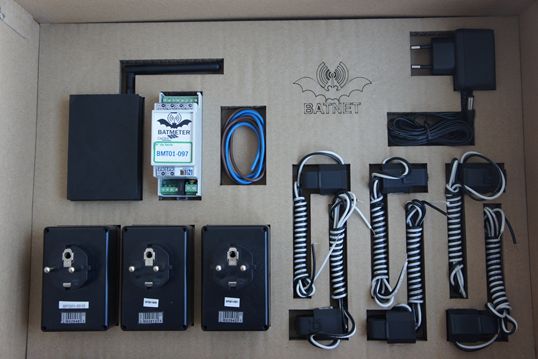Laboratorio Internet de las Cosas

This IoT Lab focuses its activity in the usage of ICT-based tools to achieve a sustainable research. In this lab is where devices used to monitor energy consumption are designed, developed and deployed. These devices are also able to act on loads and even to affect the energy consumption and they are part of a system called BatNet.
The activities which take place in this lab aim to achieve an energy efficient state optimizing the energy consumption. This goal is approached through the installation of several devices used to monitor important parameters such as temperature, humidity, luminosity, noise or power consumption. These devices are also used to modify the value of a set of parameters which manage lighting systems, HVAC systems or presence controlled systems. These functionalities are managed through a middleware and a set of applications which allow users to monitor and interact with those parameters.
IoT Deployment:
The deployment of this IoT lab has involved the design and development of several devices which should have the ability not only of measuring different parameters depending on its main focus but also of connecting to the internet and sending those measurements through a network connection to a central server.
In this section a brief definition of the devices developed for this IoT deployment is shown.
BatLink: Gateway / Central platform which provides network connection and centralized control to devices connected to it. It also contains the middleware which manages the behavior of applications and the users’ access to data and those apps
- Single-phased BatMeter: Single-phased meter used in an electrical panel which can disaggregate the power consumption in a total of six lines. It uses 6LowPAN to communicate with the BatLink device (it works over IPv6).
- Three-phase BatMeter: This device measures the energy consumption in an electric panel. It can measure a total of six three-phase lines. It takes real-time voltage and current measurements and provides the user with effective voltage, effective current, instant real power, apparent real power, real energy, accumulated real energy and accumulated apparent energy.
- BatSense: It is a multisensor device which measures several ambient parameters such as temperature, humidity, lighting, presence and noise. Its communication with the coordinator node, BatLink, is carried out through 6LoWPAN.
- BatWater
Actuators
- BatDimmer: LED lighting controller which allows to regulate the light intensity from 0% (completely switched off) to 100% (maximum LED lighting)
- BatStreetLighting: Device designed for the outdoor public lighting. It contains a luminosity sensor, presence sensor and BatDimmer. It improves the lighting quality and reduces the lighting contamination and the energy consumption.
- BatPlug: Smart plug which measures power consumption and acts on the loads.
- BatLamp: LED lights which can be remotely controlled due to its 6LoWPAN communication.
Main communication protocols and network topology:

- Interoperability: Some requisites must be fulfilled so any external device can work with our solution.
- Encryption: The encryption used is AES-128. AES is a version of Rijndael encryption which has a fixed block of 128 bits and a 128 bits key in this case.
Open IoT Pilots:
The “Open IoT” solution has been deployed not only in the Montegancedo Campus but also in private homes. In the following image, the infographic of the BatNet networks with all their motes can be observed.

There are three projects deployed in the Montegancedo Campus: Green Labs, Street Lighting and Smart Building. These projects generate five wireless sensor networks to which a total number of 222 nodes (sensors and actuators) are connected.
CeDInt-UPM has also deployed a pilot in 20 private homes which focuses in the energy consumption monitoring
1. Green Labs
The aim of this pilot is to monitor the power and energy consumption of the greenhouses situated in the GDCP of the UPM’s Montegancedo Campus. In these greenhouses, sensors and actuators have also been installed with the objective of checking the improvement of the energy efficiency due to these devices.
This pilot includes:
- 2 BatLinks.
- 70 single-phase BatMeters used to monitor the energy consumption in 420 independent circuits.
- 10 BatSenses, which measure temperature, humidity and luminosity inside the greenhouse.
- 25 actuators BatDimmers which control the LED’s luminosity.
A new web application has been developed for this pilot. This application shows not only the energy consumption of the lamps and devices, but also the value of the parameters which have been measured through the BatSenses. The GreenLabs’ app allows users to manage the BatDimmers so they can modify the level of light that their plants are receiving

2. Smart Lighting
The aim of this pilot project is to improve the outdoor illumination infrastructure at Montegancedo Campus. This Smart Lighting project provides the Campus with a smart lighting system which can measure the luminosity level and detect presence. This system is also able to modify the value of the luminosity level so unless there is a pedestrian presence detected it is set to a minimum.
Taking into account that the main objective of this group is the energy saving, one of the main goals of this pilot is showing how using these sensors and actuators there is an actual energy saving. These devices are the following ones:
- 2 BatLinks
- 69 BatStreetLighting. Each one installed in a streetlamp
- 2 BatPlugs used to manage the buildings lighting systems
- 2 BatMeters

3. Smart Building
The main goal of the Smart Building pilot is to generate a report where the energy performance of a building can be shown. CeDInt-UPM building has been fully equipped with the following devices:
- 1 BatLink
-
40 BatSenses. They measure temperature, humidity, luminosity level, ambient noise and power.
-
30 three-phased BatMeters. They measure the energy consumption of 540 circuits inside the building.
-
1 BatWater. This device includes a volume flow rate and thermal sensors.
-
1 BatLamp. It controls the wavelength of a LED component.
-
Meteorological station
This project pilot has a second phase in several buildings of Moncloa Campus with 16 three-phased BatMeters and 17 BatLinks

4. Smart Home
This project pilot focuses on the measurement of the energy efficiency in 20 private homes. Users have been selected taking into account their technological knowledge and the first tests of this project have taken place in their private homes.
The Smart Home project contains:
- 20 BatLinks
- 20 BatMeters
- 60 BatPlugs
In addition to these devices, a web application has also been developed. In this app users can register their home appliances whose power consumption is going to be measured through the previous devices. It will also access a central server where measurements from several devices will be stored. The main goal of this app is to show users the previous mentioned measurements and to allow them to create their own alarms and to switch on/off their BatPlugs devices through this web interface.
In the next figure one of this project’s kits is shown. This one contains a BatLink, a BatMeter, and three BatPlugs

To know more about the launch of the BatHome initiative click here.
